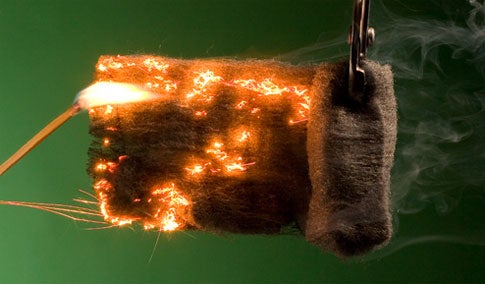Gray Matter: Burning metal
Send steel up in flames—as long as it's in wool form.

I was 10 years old, but I’ll never forget that day: The smell of bread in the oven. The crunchy grit of steel wool in my fingers. The fact that my mom still left matches out where I could find them. That’s when I learned that, yes, you can light steel with a match.
- Project: lighting steel wool
- Cost: $2
- Time: 2 minutes
- Difficulty: safe | | | | | crazy (Editor’s note: 2/5)
Weird as it seems, flammable metal isn’t that rare—plasma cutting torches and magnesium photo flashes are two examples I’ve written about here. But you don’t need anything fancy to send metal up in flames. Take a wad of steel wool (extra-fine 0000-grade works best), hold it in a pair of pliers, and light it with an ordinary match.
Achtung! Theodore Gray is a scientist trained in lab safety procedures. Do this experiment outdoors, and always wear appropriate safety gear. Children should not attempt this experiment without adult supervision. For more information on Gray’s scientific pursuits, visit his website.
You won’t get a big fireball, but it definitely burns—even faster if you blow on it. Bits of red-hot iron may fall to the ground, so do it outside and watch your feet.
If you can light steel wool with a match, why can’t you light a nail? Or a cast-iron pot? It’s a question of surface area versus volume. The burning process, which is just rapid oxidation of the metal, has to bring nearby iron to its ignition temperature fast enough to sustain a chain reaction. Thick pieces of iron conduct heat away far too fast for the surface to ever reach the ignition point. But in very thin strands, there’s nowhere for the heat to go, and a burning patch can race along the length of wire, converting a whole steel-wool pad into iron oxide-rust—in less than a minute.
There isn’t really a practical reason to burn steel wool (unless perhaps you were stuck in the woods with 50 pounds of it and a hot dog). But this form of rapid oxidation is similar to how cutting torches work. If your mom won’t let you have one of those, this is the coolest way to watch something that seems unburnable go up in flames.

This story has been updated. It was originally featured in the November 2007 issue of Popular Science magazine.